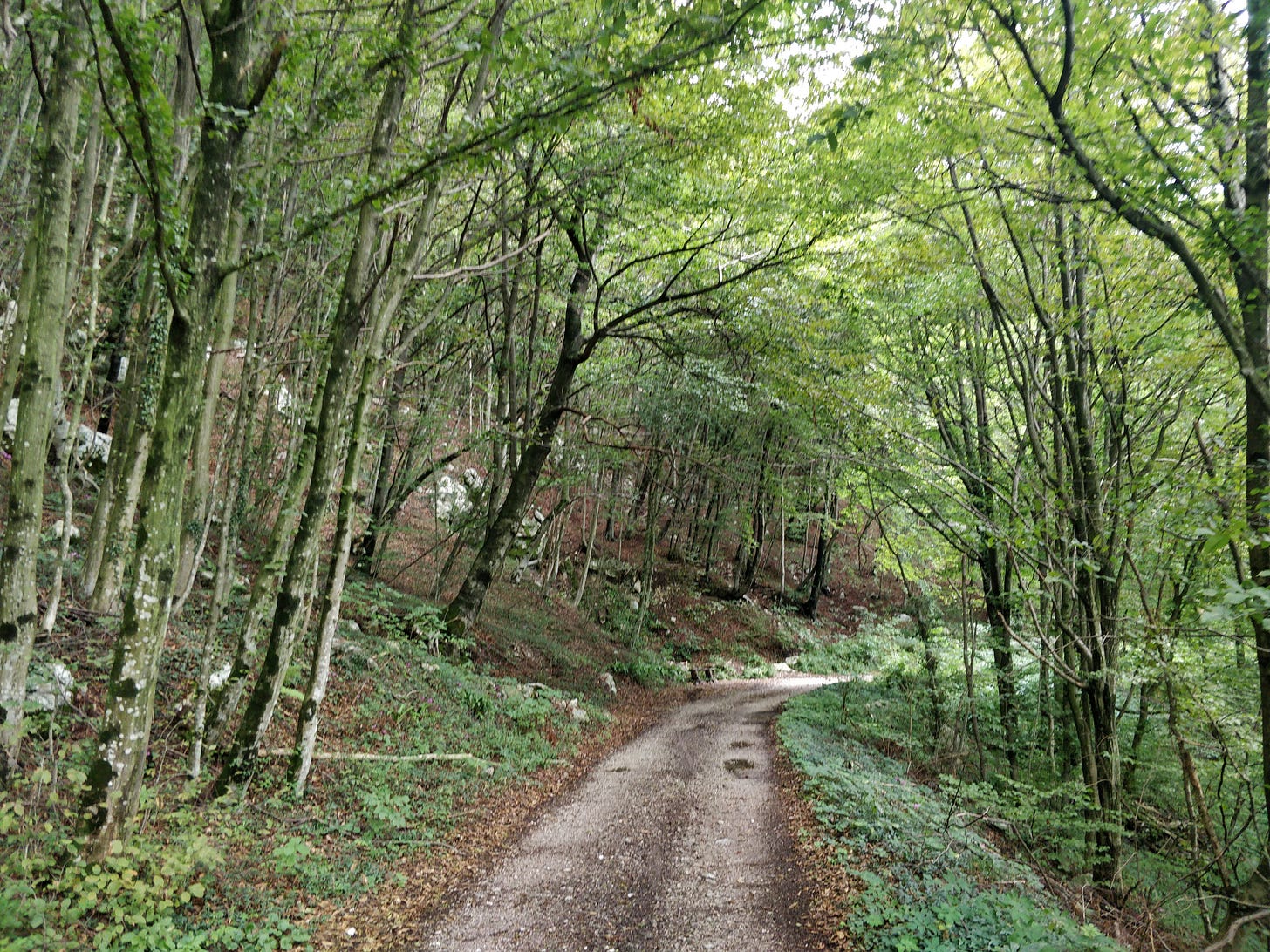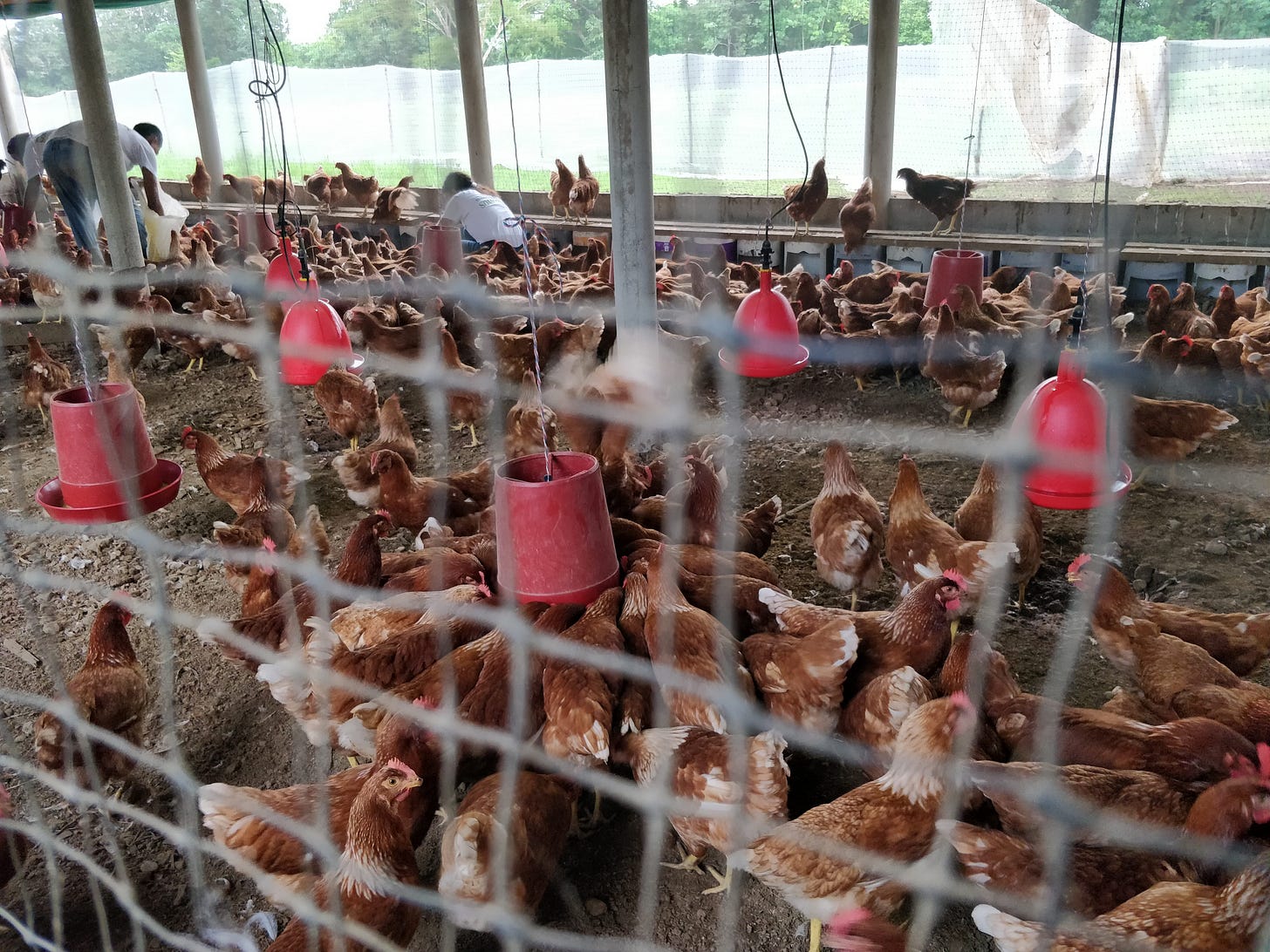Healthy Forests = Healthy People
A newsletter about food systems, climate change and everything connected to them
Welcome back to Thin Ink!
So I know this issue’s title sounds like a cheesy line from a poorly-funded public awareness campaign on the importance of trees, but sometimes you just gotta roll with the most straightforward approach. Besides, it’s true.
A report this week by the Harvard-led International Scientific Task Force to Prevent Pandemics at the Source provides a detailed explanation of why healthy forests = healthy people.
It is nearly two years since the virus that causes COVID-19 appeared. Countless lives have been lost and affected and while different countries have taken different approaches, there is still one common thread - the hope that vaccines will lead us to a post-COVID-19 world.
Alas, the delta variant has crushed some of these hopes. The authors behind the latest report also said prevention is key if we want to avoid a repeat of COVID-19. It is cheaper and could also help tackle climate change.
“To manage COVID-19, we have already spent more than $6 trillion dollars on what may turn out to be the most expensive band aids ever bought,” said Dr. Aaron Bernstein, interim director of the Center for Climate, Health, and the Global Environment at Harvard T.H. Chan School of Public Health and leader of the task force behind the report.
“No matter how much we spend on vaccines, they can never fully inoculate us from future pandemics.”
Here are the key findings.
Infectious pandemic risk originates predominantly from spillover of viruses from wildlife into people, sometimes via farmed animals. These are called zoonotic diseases.
The pandemics or near-pandemics of HIV, SARS, H1N1 influenza, Zika and COVID-19 in recent decades were all caused by viruses that spilled over from animals to people.
Land use change, wild animal hunting, wildlife trade, and animal farming are primary drivers.
Rapid, unplanned urbanization may result in cities with high population densities and poor living conditions where virus-carrying animals such as rodents can thrive and diseases can easily spread.
Forest conservation activities can reduce risk of zoonotic disease spread.
Current investments in addressing drivers of spillover are small in comparison to the direct economic losses from COVID-19, even when these are annualized over a century.
No more than $4 billion are spent each year worldwide on spillover prevention activities, whereas COVID-19 alone has resulted in an estimated global GDP loss of $4 trillion dollars, or roughly $40 billion per year for a century.
The links to food production
Disease emergence in tropical regions may especially relate to land clearing for agriculture.
Roughly half of global zoonotic infectious diseases in humans are a result of changes in land use, changes in agricultural and food production practices, or wildlife hunting.
About 22% of the land area within biodiversity hotspots, which often overlap with emerging disease hotspots, is threatened by agricultural expansion.
Intensification of industrial food-animal production may increase the risk.
Animal farms are a key interface: high-density pig farms enabled rapid pig-to-pig transmission of Nipah virus in Malaysia that spilled into agricultural workers; SARS-CoV-2 infected mink farms in Denmark and resulted in several human infections.
Pigs and poultry each carry influenza virus strains that can swap genomic segments and create novel strains with pandemic potential in people. Their production has grown rapidly, especially in low and middle income countries, and could further double or more in the next decade.
Domesticated animals also share more zoonotic viruses with humans than those known at present in wild animals.
Dams, reservoirs, and irrigation networks often increase with agriculture while wetlands often decrease. This redistribution of fresh water is associated with the spread of vectors and hosts of human pathogens.
For example, Aswan High Dam in Egypt and its irrigation network was associated with a rise in mosquito vectors and mosquito-borne disease the lymphatic filariasis. Similarly, dam and irrigation construction in Sri Lanka and India led to increases in malaria.
What needs to be done?
Greater investments in forest conservation, especially in the tropics.
Better biosecurity around livestock and wild animal farms. What is ‘biosecurity’? Have a read of this short piece from Nature Food.
Establishment of One Health Platforms that work to reduce spillover risk. One Health is an integrated approach that takes into consideration the health of people, animals, and the planet.
It’s a 44-page report and fairly easy to read, but if that’s too much, watch these two one-minute videos of why healthy forests = healthy people and why farming, particularly of livestock, plays a crucial role in curbing future pandemics.
Global Biodiversity Meet Delayed… Again
Speaking of protecting forests, a key UN meeting to discuss a new framework to protect nature has been pushed back again to 2022.
The biodiversity summit or COP15 as it is known - not to be confused with the COP26 climate summit which is going ahead in Glasgow in November - was to have been held last year in Kunming but COVID-19 put paid to the plans.
It was shifted to later this year but host country China and the Secretariat of the Convention on Biological Diversity (CBD) announced this week that it will now be a two-part event - a virtual opening session from Oct. 11 to 15 and in-person negotiations from April 28 to May 8, 2022 in Kunming, China.
There are some key issues at stake here, including plant gene data, and nations are being urged to conserve at least 30% of land and sea areas worldwide.
A first draft of the framework has been published but the WWF has criticised it as lacking “both the ambition and urgency required” to reverse shocking declines in nature.
A key area where it is falling short on? Addressing the need for sustainable and healthy diets, according to WWF.
But the Food Systems Summit will happen…
On Sep 23, Thursday, according to the Summit Secretariat. The event will be held during the UN General Assembly and, underlying how the global pandemic is still very much a concern, will be a virtual event.
If you need a reminder of some of the issues - and controversies - around the summit, read my previous pieces here and here.
The IPCC Bandwagon
A lot of column - or perhaps more accurately screen? - inches have been devoted to the latest IPCC report so I won’t go into too much detail, but I’d be remiss if I don’t touch on it here, since the whopping 3,949-page report mentioned agriculture nearly 200 times in relation to the causes and impacts of climate change.
First, clarification - the current report, by Working Group 1 which assesses the physical science of climate change, is different from the draft report AFP got its hands on a couple of months ago. That one is from Working Group 2, which assesses impacts, adaptation and vulnerability to climate change. You can find links to the AFP stories in the issue below.
What did the report say? Very briefly…
Human activities have already caused about 1.1°C of warming since 1850-1900, and over the next 20 years, global temperature is expected to reach or exceed 1.5°C of warming.
For 1.5°C of global warming, there will be increasing heat waves, longer warm seasons and shorter cold seasons.
At 2°C of global warming, heat extremes would more often reach critical tolerance thresholds for agriculture and health. Every single region will see increasing changes.
If you’re looking to read news reports on the report, here are a few I recommend.
This Yahoo! News piece looks specifically at impacts on food production and supply.
The Atlantic has a comprehensive but readable summary of the report.
This article from Popular Information newsletter focuses on U.S. politics but it is a good - if infuriating - read on how big corporations like Google, Amazon and Microsoft say all the right things about net zero targets but are donating to climate-denying politicians.
Climate Home News took a slightly different angle and spoke to legal experts who said the latest report “will strengthen the case of plaintiffs seeking to force governments and companies to take greater climate action”.
The Society of Environmental Journalists (SEJ) also have a good round-up of stories on the IPCC report here.
This piece also on the SEJ site has tips for journalists on how to cover the IPCC’s gargantuan and jargon-laden reports but it is a good read for others too to understand the different working groups.
I leave you with this tweet from Pep Canadell, executive director of the Global Carbon Project, as food for thought.
As always, have a great weekend! Please feel free to share this post and send tips and thoughts on twitter @thinink, to my LinkedIn page or via e-mail thin@thin-ink.net.








